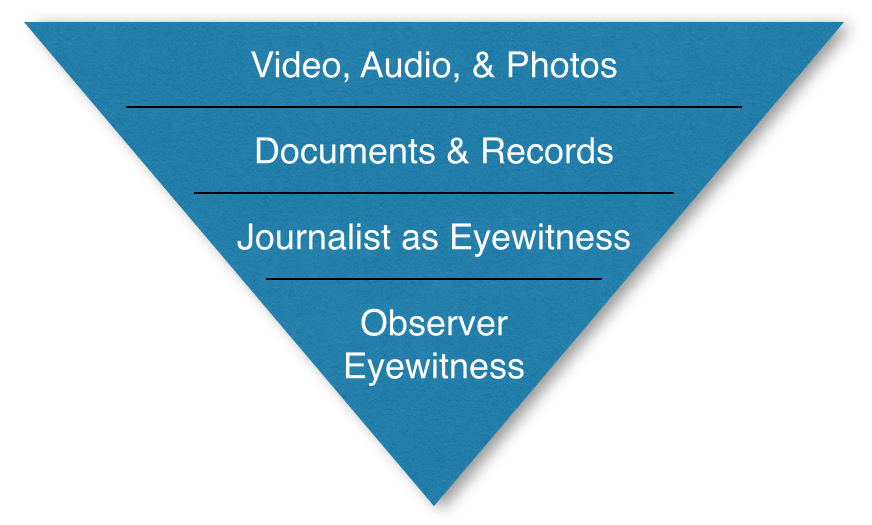Here's the summary of what we covered in Lesson 7:
- Facts as well as falsehoods are consequential, and can lead to far-reaching consequences if spread incorrectly.
- In the context of this course, Truth is defined as the best version of the truth as it is known right now proportional to the evidence.
- The collection of this evidence is known as the Verification Process.
- Journalistic Truth is built on the idea that the truth is Provisional, and will change over time as the evidence changes.
- The Journalist's Process of Verification should follow these rules:
- Gather, assess, and weigh evidence & information
- Place facts in the big picture to give context by which to form an accurate impression of what has happened.
- Explain how they know what they know – and what they don’t know: which translates as transparency.
- There are two main types of evidence collected by the journalist: Direct Evidence , which is captured from the source & Indirect Evidence, which comes second hand.
 There is a heirarchy of direct evidence which lists videos and photographs as stronger evidence than documentary evidence, and an eyewitness account from a journalist is stronger than the eyewitness account from a citizen.
There is a heirarchy of direct evidence which lists videos and photographs as stronger evidence than documentary evidence, and an eyewitness account from a journalist is stronger than the eyewitness account from a citizen.
- The process of verification can fail when:
- Journalists rush to get the story first, jump the gun.
- Facing deadline, some journalists get sloppy or provide incomplete reports
- People (sources) give reporters incorrect information…or outright lie.
- When considering the process of verification, the news consumer should always ask: "Did the Reporter Open the Freezer?"
